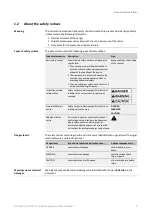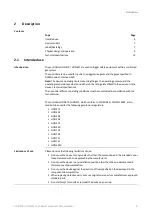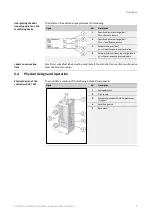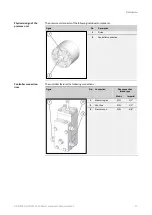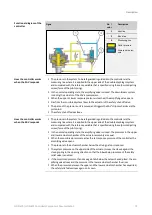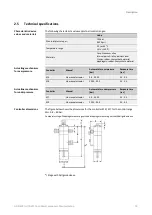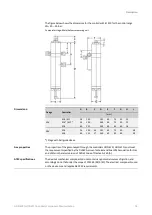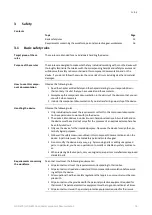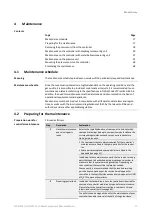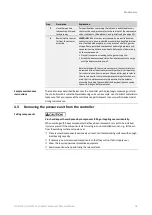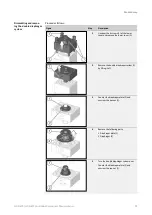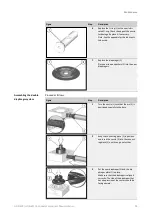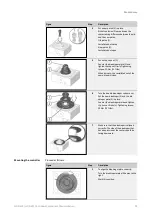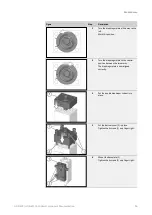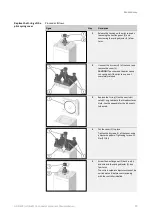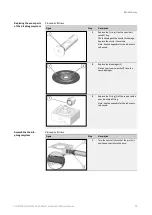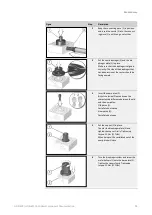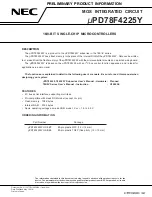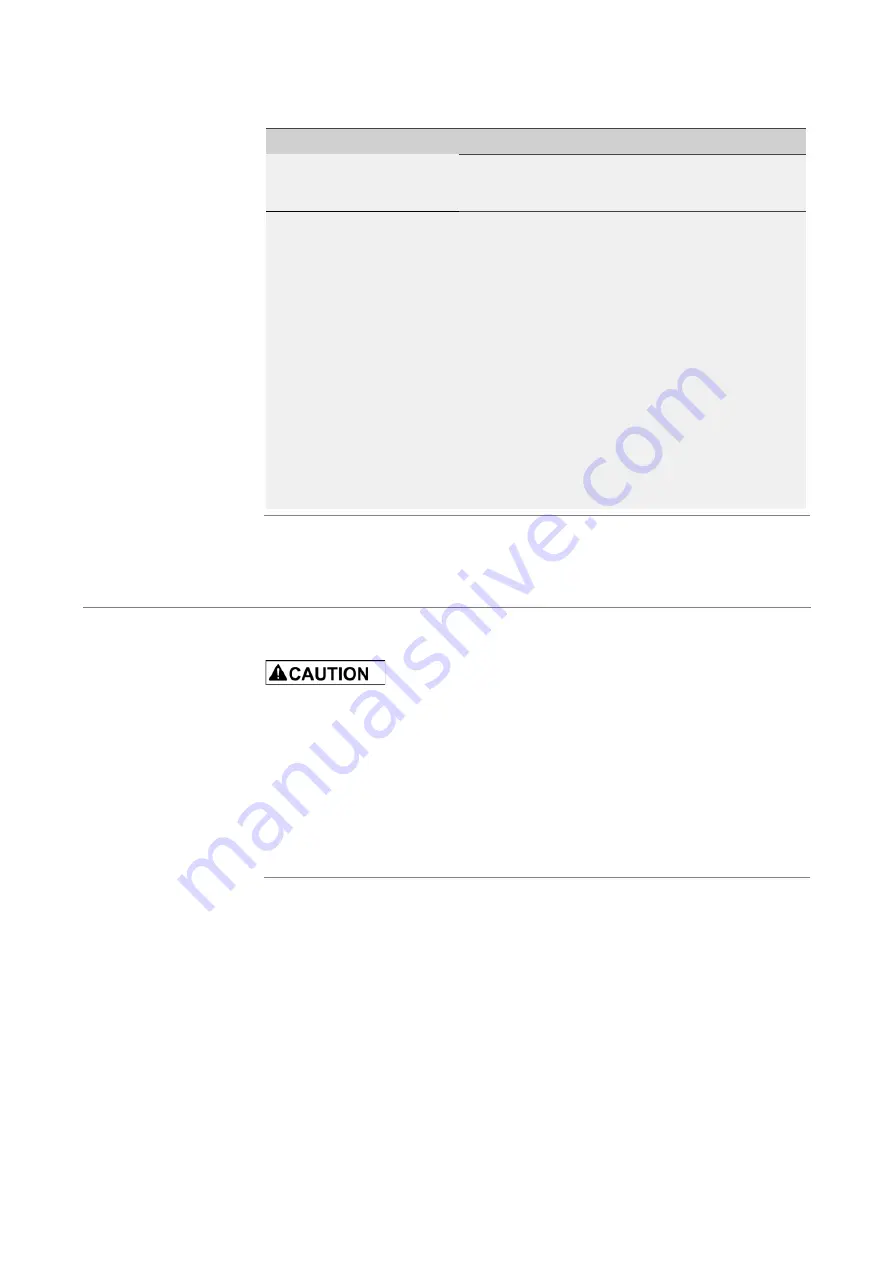
Maintenance
HON 670 / HON 671 Controllers Component Documentation
18
Step
Description
Explanation
3
Have the required
lubricants and thread-
lockers ready
For specifications concerning the lubricants and threadlockers
that must be used, please refer to the sections of the same name
under
Lubricants, threadlockers, and special tools
(see page 65).
4
Removing the control-
ler from the actuator
assembly
WARNING!
Risk of serious injury posed by pressurized compo-
nents moving in an uncontrolled manner when handled improp-
erly. If not handled properly or in the event of a defect, gas can
escape from pressurized components under high pressure and
cause serious injuries and even death. Before you start working
on these components:
▪
Close all connections leading to the gas-carrying line.
▪
Establish a depressurized status. Residual amounts of energy
must be depressurized as well.
Before starting with the maintenance work, the controller must
be removed from the actuator assembly with which it operates.
For instructions on how to remove the controller, please refer to
the user manual for the relevant gas pressure regulator. Keep in
mind that it is always necessary to depressurize the actuator
assembly (including the controller) and purge all gas-conveying
lines with nitrogen before removal.
The maintenance described below uses the controller with a diaphragm measuring unit and
the controller with a metal bellows measuring unit as an example. Use the bills of materials to
make sure that you replace all the maintenance parts relevant to your specific device model
during maintenance.
4.3
Removing the pressure unit from the controller
Crush and impact hazard posed by components falling or toppling over accidentally.
When working with heavy components that have been removed or are yet to be installed,
injury may result if the components start moving in an uncontrolled manner, e.g., fall
down
from the working surface or topple over.
Place removed components exclusively on level, horizontal working surfaces with enough
load-bearing capacity.
If necessary, secure removed components so that they will not fall or topple over.
Wear the required personal protective equipment.
Exercise caution when performing the relevant tasks.
Sample maintenance
instructions
Falling components


